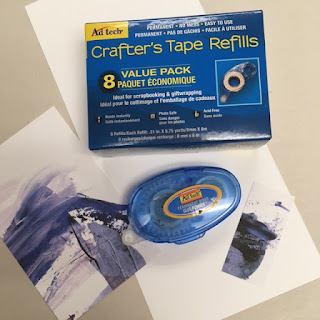(To read full post you may need to click post title to view in your browser.)
Following up on the last post, where I happily chopped up colour copies of three old acrylic sketches I'd found in a box of junk papers, this is the further adventures of those bits and pieces.
The squares (for 5x5-inch notecards) are 9x9-cm. The rectangles (for 5x7-inch cards) are 9x14-cm. And the bits for the backs of the cards are 3x7-cm. It's always fun going through the scraps searching for these tiny landscapes.
Although I do use purchased Strathmore card blanks (either printmaking or mixed media), I often cut my own blanks. I like Staples 110 lb cardstock, but sometimes, especially for 5x7-inch cards, it's a little light. Couldn't source anything locally but did find a heavier weight on Amazon -- 120 lb -- something by International Paper called Accent Opaque Digital.
I cut down the 8.5x11-inch sheets on the trusty paper cutter. Off-cuts get re-purposed or shared with a daycare for craft projects.
Then it's off to the equally trusty hand-made scoring board.
I use an old wooden butter spreader. One drawback to using heavy cardstock is that it resists scoring. So it's three firm scores, being careful to not get carried away and slice the paper. Then fold along the scored line, which is a bit of a battle. The paper is long grain meaning it likes to be folded east to west. The fold then goes the length of the paper. But I need to fold north to south so the fold is going across the grain. That's when you get those ragged, unruly folds. You can see the rough fold below:
Then it's taking images that made the cut, and mounting them. I use either a glue stick or this tape a lovely friend gave me. The drier the adhesive, the better. Less chance of wrinkling.
Love watching the production accumulate!
I eyeball both mounting the images and stamping the back of the card. (I've gotten smarter and now stamp the blank card first. Then if I screw up the alignment I haven't wasted an image. If that does happen, then I cut off the back and use the front as a postcard. Waste not, want not, as they say...
If you've stuck with me this long, big applause! Thank you! The gist of the post was to document some of my process after the art is created. I enjoy every stage involved in making my mail-sized missives -- from working out an idea all the way through the folding, scoring, labelling and packaging. There's never a bad day in the studio! Now it's signing and packaging time.
Another great day. Talk soon!

































